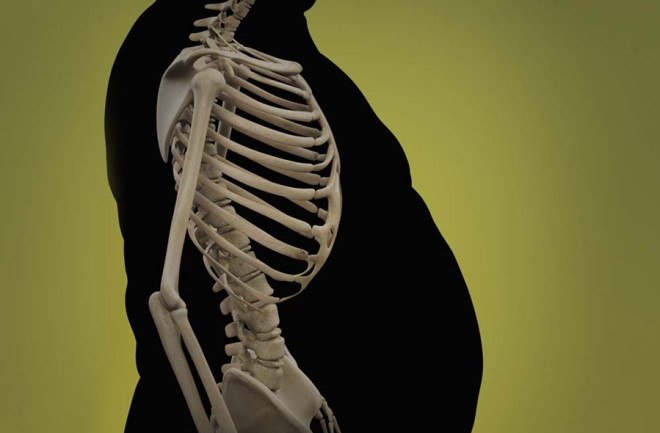Visceral Fat (Active Fat)
Type 2 diabetes can be caused by storing high amounts of visceral fat
Visceral fat is body fat that is stored within the abdominal cavity and is therefore stored around a number of important internal organs such as the liver, pancreas and intestines.
Visceral fat is sometimes referred to as ‘active fat’ because research has shown that this type of fat plays a distinctive and potentially dangerous role affecting how our hormones function.
Storing higher amounts of visceral fat is associated with increased risks of a number of health problems including type 2 diabetes.
What types of fat do we store?
It is important to define the difference between visceral fat and subcutaneous fat. Subcutaneous fat is the fat that we store just under our skin. The fat we may be able to feel on our arms and legs is subcutaneous fat.
A growing belly can be the result of both types of fat. The fat we can feel just under the skin is subcutaneous fat but we may also be storing significant extra fat within our abdomen where our organs reside. This intra-abdominal fat is our visceral fat.
Visceral fat and insulin resistance
Carrying a high amount of visceral fat is known to be associated with insulin resistance, which can lead to glucose intolerance and type 2 diabetes. Researchers have found that visceral secretes a protein called retinol-binding protein 4 (RBP4) which has been shown to increase resistance to insulin.
What are the health risks associated with visceral fat?
All of us will have a certain amount of visceral fat but those of us with a larger quantity of visceral fat may be exposed to increased risks of the following health conditions.
- Type 2 diabetes
- Heart disease
- Breast cancer
- Colorectal cancer
- Alzheimer’s disease
How can I tell if I have too much visceral fat?
The most certain way to tell if you are storing excess visceral fat is to undergo an MRI scan (Magnetic Resonance Imaging scan). However, MRI scans are not a cheap procedure and is therefore not recommended as a diagnosis tool for diabetes risk.
A relatively good indicator of visceral fat is to take a waistline measurement. Harvard University note around 10% of our total fat is likely to be stored as visceral fat, therefore if you are carrying higher amounts of body fat than is recommended, it is therefore more likely that you are also storing more visceral fat than is healthy.
Research has shown that the size of our belly is a relatively reliable indicator of the health risks linked to visceral fat.














